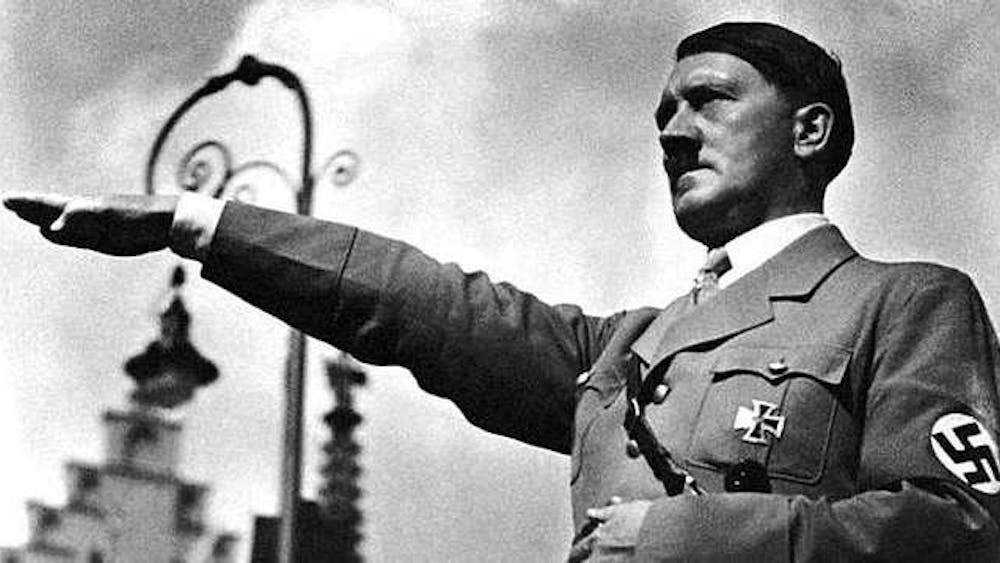Here’s a fun game to play: Who is responsible for this line — existentialist philosopher Søren Kierkegaard or Shakespeare’s Prince Hamlet?
“This earth seems to me a sterile promontory.”
“Life has become a bitter drink to me, and yet it must be taken in drops, counted one by one.”
“My sorrow is my castle. Many consider sorrow one of life’s comforts.”
“What is a man if his chief good and market of his time be but to sleep and feed? A beast, no more.”
You get the picture. Brooding, lugubrious, crippled by indecision and father issues — the two Danes bear striking similarities, despite one being a fictitious character. You would think there really is something rotten in the state of Denmark with the self-reflexive pessimism of two of the country’s best known sons. Or so I thought.
Motivated almost exclusively by my interest in Søren and Hamlet Jr.’s contemplations, I took the opportunity for some group travel to Copenhagen, Denmark, where Kierkegaard sequestered himself for most of his life, and nearby Elsinore, the site of Hamlet’s Kronborg castle. I wanted to read “Fear and Trembling” beside a bust of the philosopher and recite Hamlet’s soliloquies in Kronborg’s courtyard.
As it turned out, though, Kierkegaard statues were hard to come by in the Danish capital. The running joke of our four-person group became: “Kierkegaard who?” Had the Danes forgotten their most beloved cultural icon? All about were smiling, fair-haired Nordics, references to the gleeful children’s stories of Hans Christian Andersen and the fervor of the booming culinary scene jump-started by Noma, four-time winner of Restaurant magazine’s world’s best accolade, for serving, among other things, foraged flowers, live ants and moss. Where was the brooding? Where was the thought?
Near the end of the trip — and following some pessimistic brooding of my own — we finally stumbled across some Kierkegaard references: a small square with a quotation enameled alongside, and not even an angst-filled one, just a throw-away line about living life forward but understanding it backward.
Later, I discovered that two years prior the city had celebrated Kierkegaard’s 200th birthday with a forum held at the Royal Library. I scoured the Internet for records, only to find that the man who took center stage at the forum was not the memorialized Kierkegaard but René Redzepi, the head chef of … Noma. In a moment of double-overshadowing, Redzepi was introduced as “the most famous Dane since Hamlet.”
In the subsequent discussion, Redzepi explained his inability to read Kierkegaard, whom he felt lived “too much in his head.” Redzepi went on and on about “deliciousness,” about how it makes life worth living (Kierkegaard, on the other hand, said the same thing about loving one’s neighbor, though I imagine he didn’t interact with them much). He said he had once collected herbs that grew around Kierkegaard’s grave, so he had, in a more literal sense, consumed some of Kierkegaard. While Kierkegaard spent his life in a study, Redzepi spends his out in the world, trudging through mud and taking bites out of any fresh thing he can find, sucking the marrow dry. The chef did mention, though, that in less adventurous moods he enjoys sitting in the courtyard of the Royal Library by a statue of none other than Søren Kierkegaard.
And then I understood.
I had passed that courtyard many times during our stay in Copenhagen. Not once did I think to look for Kierkegaard’s likeness there. If anywhere, he would be inside the library, enshrined with the books through which I knew him. Each time we passed, I was trapped in my own thoughts. I have a tendency to live too much in my head. It’s why I’m drawn to Kierkegaard and Hamlet in the first place, though it’s not so much as a kindred spirit but as someone who wants to know how I live in the world. That’s Kierkegaard’s big question, after all. But I do think — ha, think! — all that pondering prevents me from truly being in the world.
In his final soliloquy, Hamlet criticizes “thinking too precisely on th’event” as a “thought which, quarter’d, hath but one part wisdom for every three parts coward.” This, however, comes after he’s stabbed his lover’s father in a thoughtless act of rage. We need to make ample use of our contemplation, too, for Hamlet also laments in the same soliloquy that “godlike reason” might “fust in us unus’d.” How can we establish a balance of thought and action, finding that perfect point where forward living and backward understanding converge?
I think I'll consult Kierkegaard on the matter. In “Either/Or,” a book whose title relates to balancing opposites, the philosopher writes, “There are situations in life in which it would be ridiculous, or a kind of insanity to apply an either/or.” The dilemma of living in one’s head or living in the world seems to be one such instance. At any rate, the choice between when to think and when to act is a difficult one, about as difficult as differentiating the words of Hamlet from the words of Kierkegaard. The existentialist in me begs to end on the note: The choice is yours.













